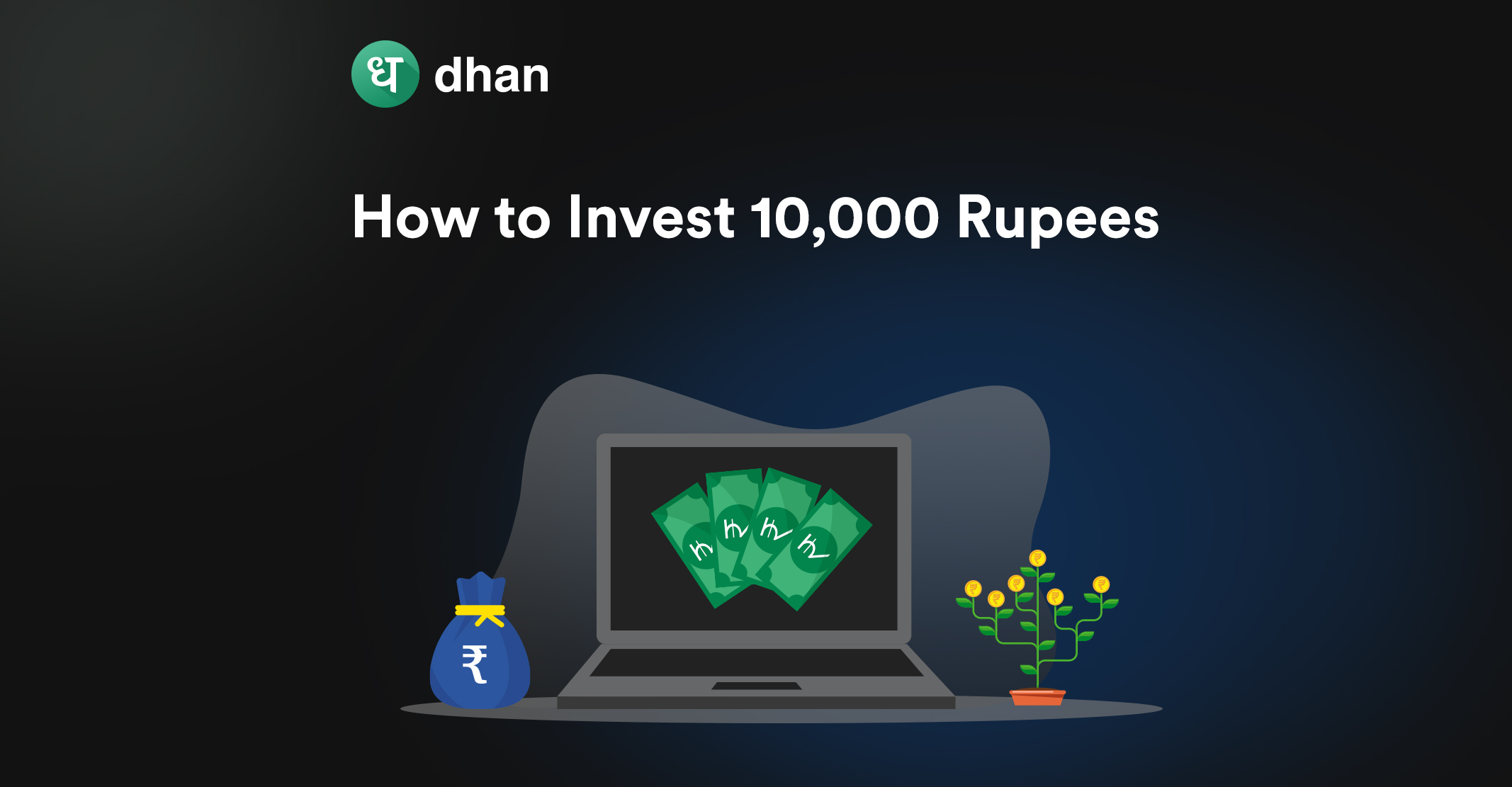If you know how to invest 10,000 rupees, you can secure your financial future. Investing Rs. 10,000 every month for 5 years with returns of 12% will fetch you ₹2,24,864 on top of your invested capital of Rs. 6,00,000.
But here’s the twist. You need to understand different types of investments, their benefits, and drawbacks to make an informed decision. In this article, let’s see what you can do with Rs. 10,000 to invest.
Can You Start Investing with 10,000 Rupees?
Yes, you can start investing with 10,000 rupees in a variety of asset classes. Think of it as planting a tree.
Initially, it’ll be a small sapling that slowly grows over time, eventually becoming a towering tree.
However, your expectations must be measured and rational. Chances are, you won’t become rich overnight by investing in any asset.
That said, choosing the right investment can help your money compound. This is known as the magic of compounding.
The trick is to start right, be smart, and think big. Start by determining your financial goals and attach them to a time period.
After this, decide on your risk appetite. Then move on to choosing the right asset for these factors. Now, let’s look at where you can invest Rs. 10,000.
How to Invest 10,000 Rupees in the Share Market?
Have you heard that phrase more than a thousand times since childhood: “Do not put all your eggs in a single basket.”
No? Well, now you have read. Use this strategy in your investment. Let’s see some of the best ways to invest 10,000 rupees in the share market.
1. Mutual Funds
Mutual funds are a way to buy more with less. They’re a basket of stocks, bonds, gold, cash, and in some cases, all four.
The minimum investment ranges from Rs. 100 to Rs. 500, giving your Rs. 10,000 investment an ample number of units in return.
In fact, you can choose several types of mutual fund schemes based on your financial goals and risk appetite.
2. Stocks
Stocks represent part ownership of a company. Your share’s value depends on the company’s growth and business.
Moreover, stock prices vary based on the company’s worth. For example, the costliest share in the world is $513,065.
However, with just Rs. 10,000, you can invest in shares of various top-notch companies in India to make the most of your budget.
3. ETFs
ETFs or exchange-traded funds work in a similar way as mutual funds. ETFs are collections of investments. You can invest in multiple securities through ETFs, like stocks of tech or banking sector at once.
4. Bank Deposits
Bank deposits offer a secure and predictable way to grow your Rs. 10,000. Fixed deposits and recurring deposits fall into this category.
Fixed deposits provide a lump-sum return at maturity while recurring deposits help you save systematically much like an SIP for bank deposits.
5. Government Savings Schemes
There are several government savings schemes like PPF (Public Provident Fund), SCSS (Senior Citizens Savings Schemes Account), NSC (National Savings Certificate), and many more.
These are the investments where you get limited but guaranteed returns. You can also invest in government bonds to get a fixed guaranteed return.
6. National Savings Certificates (NSCs)
NSCs are a government-backed savings option. Investing Rs. 10,000 in NSCs means earning a fixed interest rate over time. They offer safety and a steady return, making them a low-risk choice for conservative investors.
7. Public Provident Fund (PPF)
The PPF is geared towards steady long-term interest income and tax benefits. Your Rs. 10,000 investment in a PPF will compound over time for long-term goals over the 15-year lock-in period.
Managing Risk When Investing Rs. 10,000
Truth be told, every asset carries its own risk. Market-linked assets are prone to volatility while government-backed ones usually carry a fixed lock-in period.
You must thus manage these risks to ensure that your starting capital of Rs. 10,000 is safe and has the right environment to thrive. Here’s a detailed list.
1. Understanding Your Risk Profile
Knowing your capacity and risk tolerance is essential to become a successful investor.
Yes, you can invest Rs. 10,000. But can you invest it in volatile small-cap stocks or stable large-cap mutual funds? That’s what you need to know.
Determine your capacity and detect your risk tolerance to set your investment goal. Do not risk an amount you can’t afford to lose.
2. Thoroughly Analyzing Financials & Fundamentals
Knowing potential investments in and out will help you avoid risk and choose the right option for your money to grow.
Check every detail of your investment, right from the financials and fundamentals in the case of stocks and mutual funds, to liquidity and inflation-beating returns for others.
3. Diversification
Diversification of your money into several kinds of investments is equally important. There is no guarantee that an asset will not see rock bottom. Spread your risk across assets to average out the downside and returns.
4. Portfolio Monitoring
Closely monitor and analyze your financial portfolio. Update yourself with market trends regularly. Set goals and take action according to them. If you cannot manage the portfolio on your own, you can also take our help.
5. Using a Stop Loss
If you’re investing in the stock market, make it a habit to use a trailing stop loss. It’s an automatic trigger that stops your money from losing beyond a certain percentage. You are the one who decides what percentage of your capital you can afford to lose.
Conclusion
Investing Rs. 10,000 is a big first step towards securing your financial future. That’s why you need to ensure three things:
- Research well
- Invest right
- Monitor frequently
These three combined with realistic expectations can give your money the tools to grow over time and generate passive income for you.
Whether you choose mutual funds, stocks, government schemes, or other options, managing risk and diversifying your investments are crucial.
Remember to regularly monitor your portfolio and use tools like stop-loss orders in the stock market to protect your capital.
Like this? Then you’ll love these blogs:



